Introduction
The aim of this presentation and project is to harness the power of social networking to the benefit of the university community.
The presentation seeks to:
- Evaluate the value of social networking services (SNS).
- Explore the product development cycle as a suitable approach of introducing social media services.
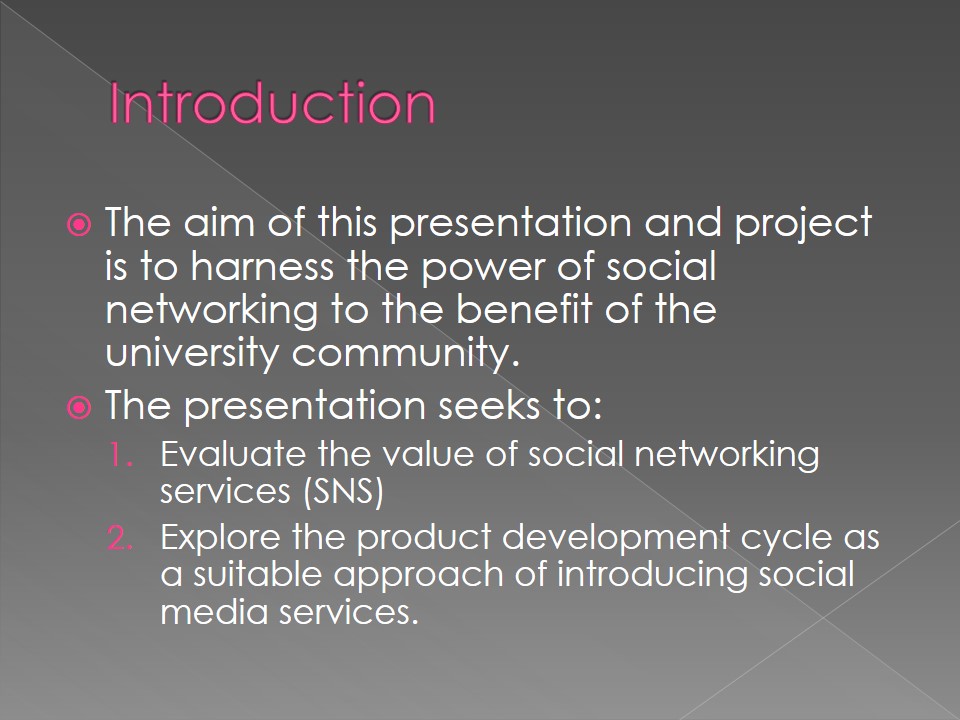
Benefits of social networking
- The importance of social networking services to young people is quite evident since communication and sharing of content are the major uses of these service.
- Benefits that the University will appreciate include:
- It can be used to leverage and complement formal educational activities and thus enhance learning.
- It can be incorporated into e- learning frameworks and can also be used to overcome spatial limitations on access to learning materials and resources.
It can significantly improve the engagement between teachers and students, since social networking services enhance/create relationships(Wyatt & Wright as cited in Collin et al., 2011).
SNS can promote informal knowledge and skills extension through development of peer-to-peer learning, cultural expression and sharing, and a more empowered conception of citizenship.
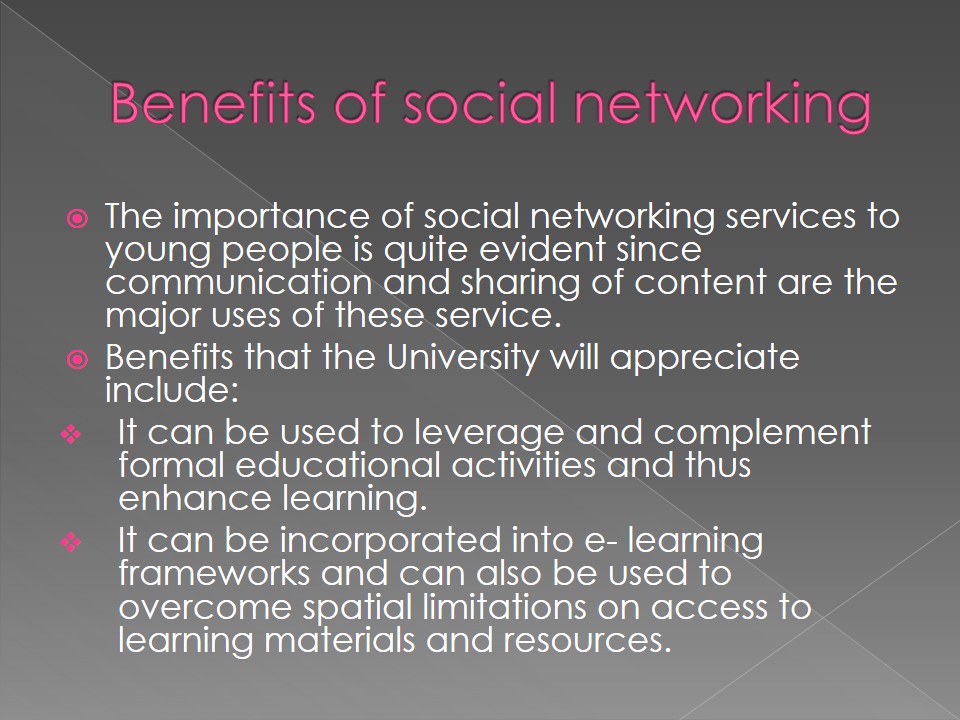
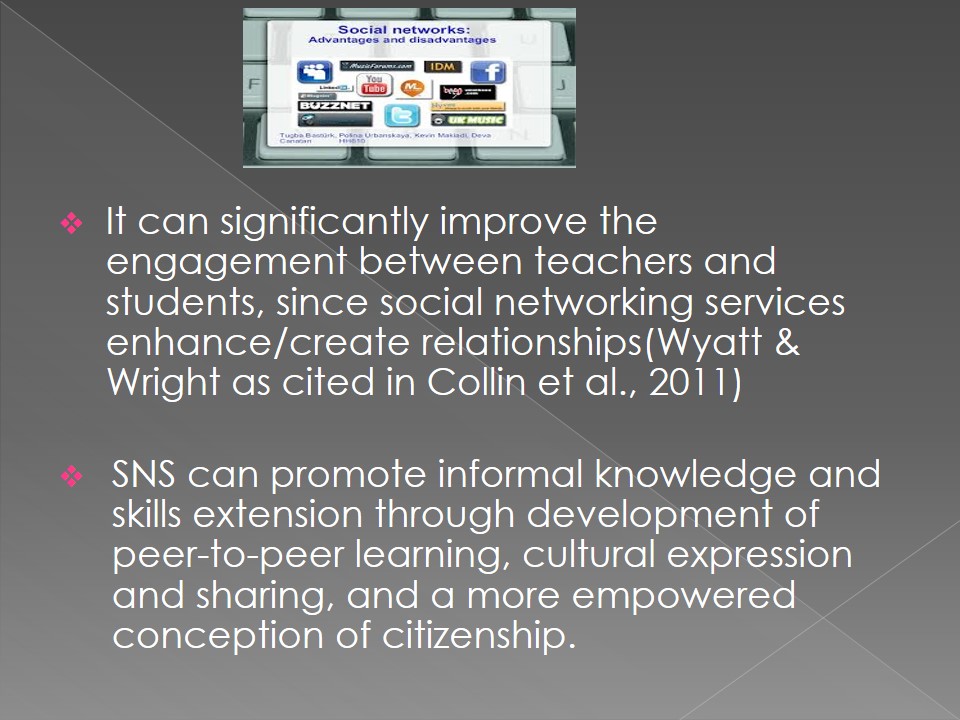
Challenges
Social networking systems present a number of challenges such as:
- The risk of harm resulting from mismanagement of personal information which is a significant threat.
- Potential of copyright infringements.
- ‘Cyber citizenship’ also creates potential for ‘cyber-bullying’ (Collin et al., 2011). Predation is also more subtle and therefore harder to control.
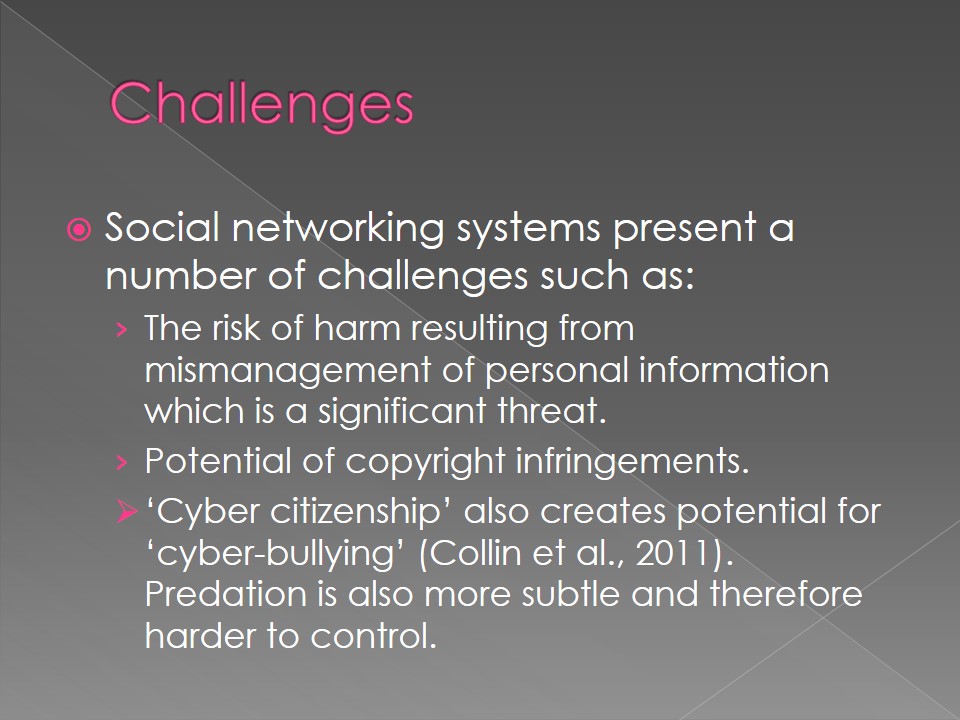
How to roll out SNS in the university
- The university stands to gain significantly from the integration of SNS into their current learning forums and social platforms.
- The product development cycle approach can be used as basically, it is a phased conversion of an idea to something tangible (Clinivation, n.d, pg. 4).
- Product development has five phases: concept, feasibility, planning, development and production.

Product development cycle approach
- Concept phase is concerned with the idea to develop the SNS which should be fully articulated and assumptions identified.
- Feasibility phase is where the SNS platforms are investigated in terms of technological possibility.
- Planning phase involves the production of a detailed development strategy with the goals of the SNS in view.
- Development stage kicks in with a pilot SNS within the university.
- Once a software prototype has been produced and approved by the university, then a full roll-out of the social media in the university may commence.
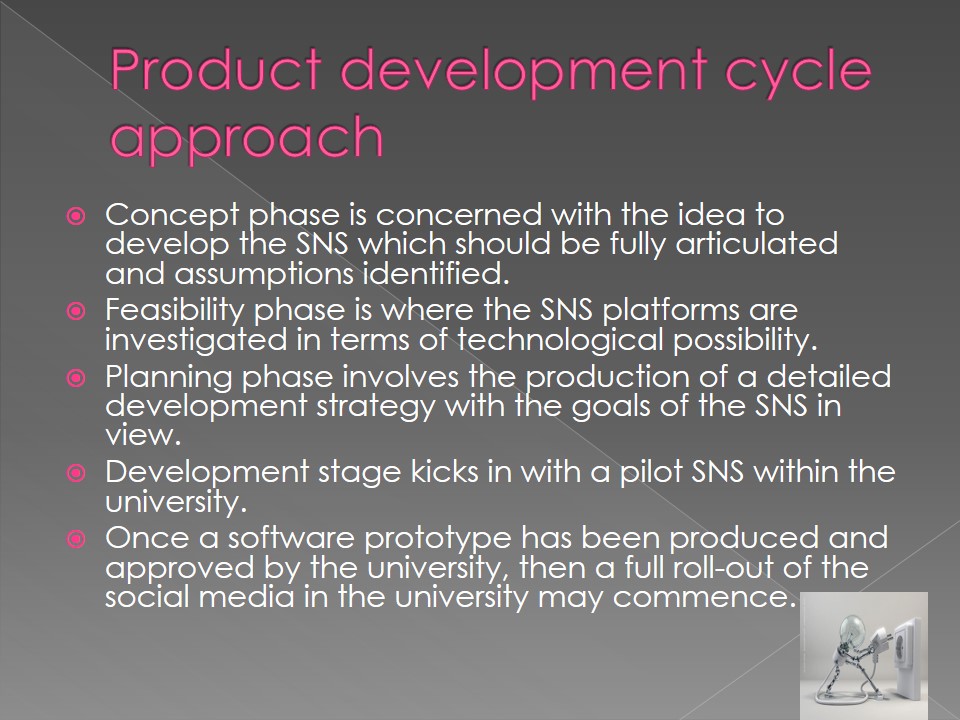
References
Clinivation (n.d). Product Life Cycle. Web.
Collin, P., Rahilly, K., Richardson, I. & Third, A. (2011). The Benefits of Social Networking Services: A literature review. Cooperative Research Centre for Young People, Technology and Wellbeing. Web.